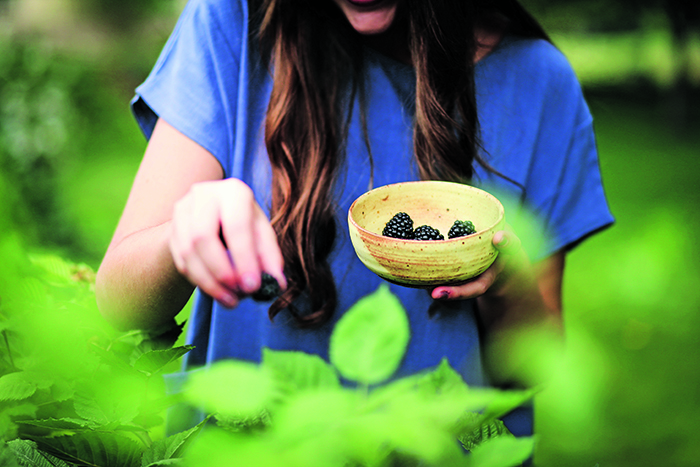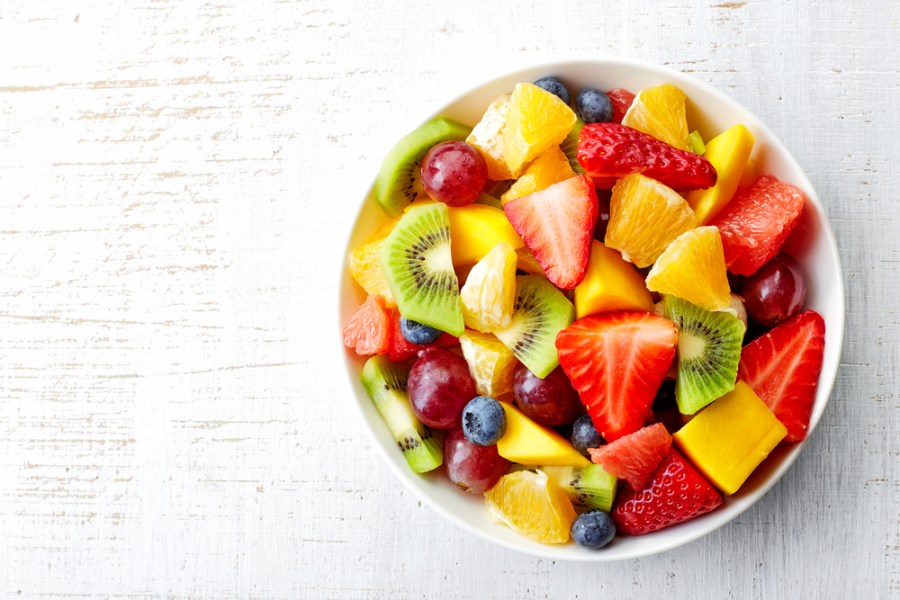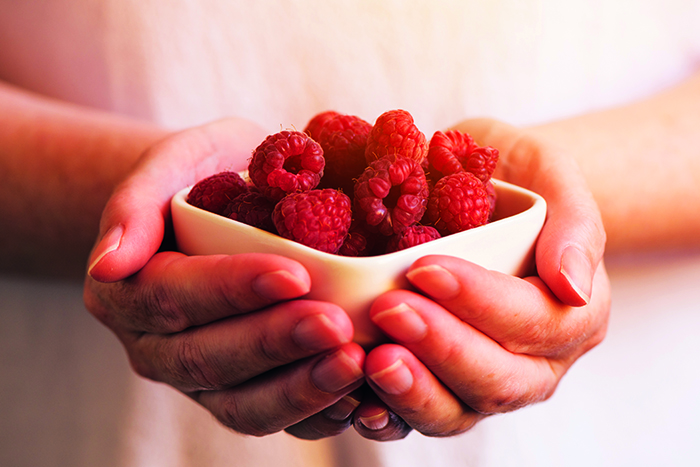We all know it’s important to cut down on sugar but where does fruit come into things? Top Santé weighs up the facts so you can stay savvy and slim when it comes to sweet treats.
What is fructose?
Fructose is a type of simple sugar that’s generally found in fruit and veg, as well as some man-made chemicals. It gets converted into glucose by your liver before being used by the body.
Is fructose bad for you?
There’s nothing quite like sinking your teeth into a crisp, juicy apple, or treating yourself to a comforting bowl of oaty plum crumble on a chilly day, but when it comes to downing a glass of fruit juice, you may want to think again. According to the latest research, fructose – the type of sugar naturally found in fruit – could have specific ramifications for your health when it’s manufactured into certain forms.
What is fructose found in?
If you largely stick to healthy foods, fruit will probably be the main source of fructose in your diet. ‘You needn’t worry about fructose from fruit,’ says Rhiannon. ‘Fruit is loaded with fibre and water and has significant chewing resistance. In other words, most fruits, especially harder ones such as apples, take a while to eat and digest, meaning the fructose reaches your liver slowly and can be more easily processed.
However, you do need to be wary of the fructose in fruit juice. ‘There is about as much fructose in fruit juice as there is in a sugar-sweetened soft drink,’ says Rhiannon. ‘But unlike whole fruit, there is no fibre or chewing resistance to slow down consumption, making it very easy to drink a large amount in a short space of time.’ Without the fibre, the fructose in the juice is absorbed more quickly into your body and blood. ‘Smoothies aren’t quite so bad if you blend up the whole fruit as some of the fibre is preserved, but it’s still not as good as eating a whole piece of fruit,’ says Rhiannon. The Food Standards Agency recommend sticking to just one small 150ml glass of unsweetened fruit juice a day. Try measuring it out because most of us serve ourselves a lot more than this!
How much fruit is too much?
There are currently no official daily upper limit guidelines for fructose. What’s more, there is also no requirement for manufacturers to list fructose on product labels; they only have to list the total sugars so it’s hard to work out how much fructose is in there. Therefore, the best solution is to keep your overall sugar intake below the recommended 30g of added sugar per day.
What does fructose do to the body?
Sugar, also known as sucrose, is made of two simple sugars: fructose and glucose. ‘Your body actually produces glucose itself,’ says Rhiannon. ‘While glucose is vital for life, fructose isn’t. Every cell in your body can use glucose for energy, but only your liver can metabolise fructose.’
What’s the difference between fructose and glucose?
Fructose is converted into fat by your liver almost 19 times faster than glucose, which could spell bad news for your waistline, according to a study published in The Journal of the American Osteopathic Association. It’s especially bad for what’s called visceral fat, aka belly fat.
‘It’s widely considered that eating too much fructose may be a driver behind many of today’s main health problems, including obesity, type 2 diabetes, heart disease and even some cancers,’ says Rhiannon. ‘But, these illnesses are more often associated with fruit juices and foods that contain added fructose. It’s almost impossible to consume enough fructose from whole fruits to cause yourself any harm.’

What is high fructose corn syrup?
One more reason to steer clear of highly processed foods where possible is high fructose corn syrup. This artificial sweetener is made from processed corn starch and it’s packed with calories as well as being a suggested cause of health problems including leaky gut syndrome and fatty liver. It’s cheaper than normal sugar, so it gets added to lots of convenience and snack foods.
Which foods contain high fructose corn syrup?
Items such as fizzy soft drinks, sweets, sweetened yoghurt, pre-made salad dressing, ready meals and breakfast cereals can be made with high fructose corn syrup, so always check the labels and if in doubt, make food from scratch.
What is fructose malabsorption?
Some people are unable to absorb fructose properly, which is known as fructose malabsorption and can lead to bloating and tummy pain.
Now read:









